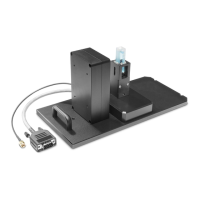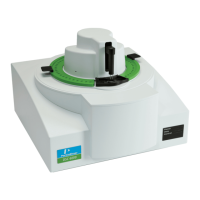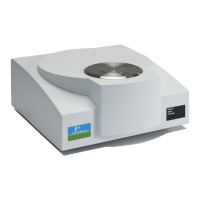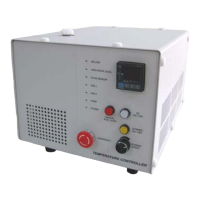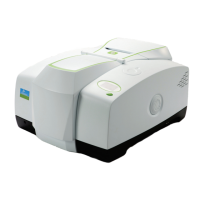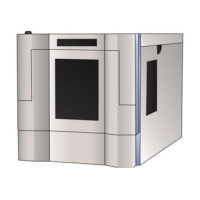Using the Spectrometer . 63
AVI Correction
AVI correction can be set in the Advanced section on the Instrument tab of the Scan and
Instrument Setup dialog.
NOTE:
AVI correction uses a methane gas cell installed in the filterwheel. AVI correction
is only available on the Instrument tab if this cell has been fitted.
What is AVI correction?
The objectives of Absolute Virtual Instrument (AVI) correction are:
• Consistent performance over time and between instruments;
• Traceability for all measurements.
Although FT-IR and FT-NIR spectrometers use a reference laser, the wavenumber
calibration and lineshape are affected by differences in beam divergence and uniformity.
This is true for all FT-IR and FT-NIR spectrometers. Differences can occur between
instruments, when using different sampling accessories and when components are
changed. AVI allows calibration and lineshape to be maintained.
The Absolute Virtual Instrument is an instrument with theoretical performance, such that
the result of measuring a known sample on such an instrument can be predicted. So, if
we measure with a real instrument and calculate the software transform to match the
theoretical result, we can apply this transform to future measurements.
The Absolute Instrument is defined by wavenumber calibration, instrument lineshape and
ordinate accuracy.
What does AVI correction do?
When AVI is switched on, the software measures the current instrument profile relative
to an absolute standard (the methane cell in the filterwheel) and an ideal lineshape
function, and applies a correction. The use of an on-board methane cell means that it
also provides correction for any sampling configuration.
NOTE:
AVI correction can only be performed if an AVI Calibration has been set up for
the current sampling configuration.
Figure 15 Spectra of methane at 4 cm
-1
resolution as measured (top) and with
AVI (bottom).

